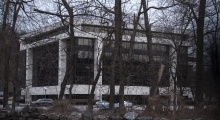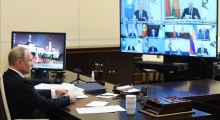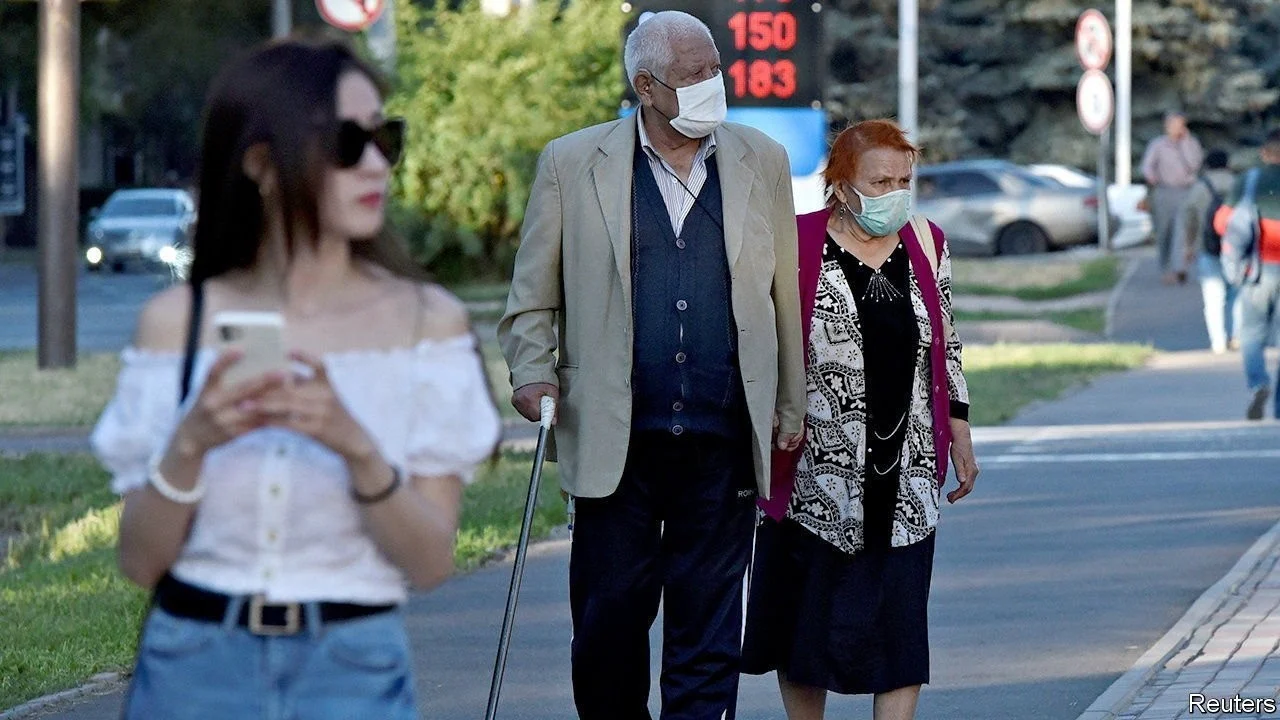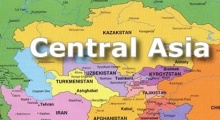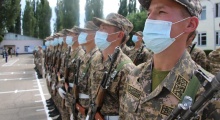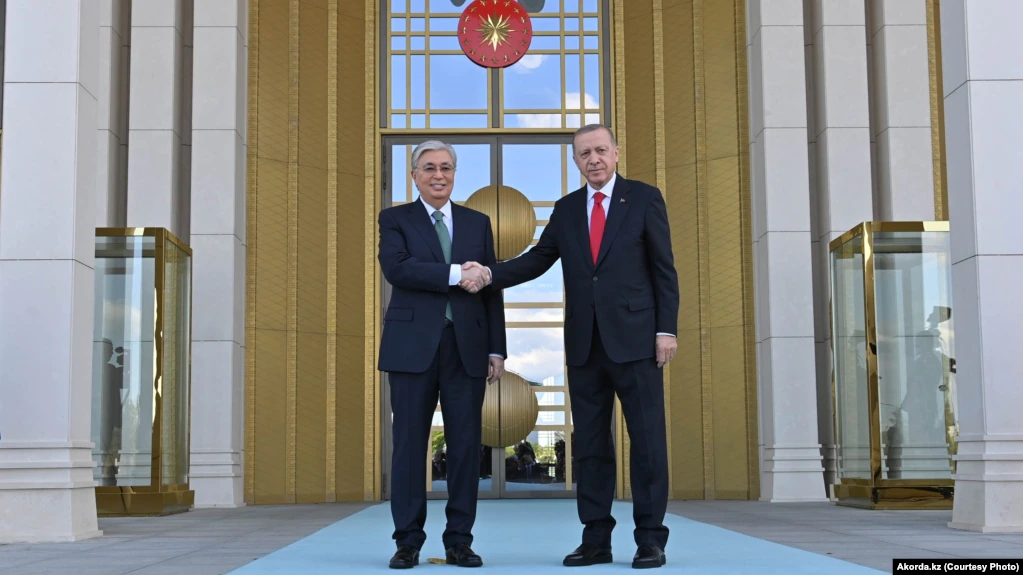
Russia intends to build the first thermal nuclear power plant in Kazakhstan, the world's largest uranium producer. But where it will be in that vast country and who will own it remain unclear.
As the Russian President, Vladimir Putin, signed the recent deal forming the Eurasian Economic Union with his counterparts from Belarus and Kazakhstan in the Kazakh capital city of Astana, one controversial agreement went relatively unnoticed.
On the same day, May 29, the Russian state nuclear corporation, Rosatom, signed a memorandum of understanding (MoU) with the Kazakh national atomic company, Kazatomprom, on constructing the first nuclear power plant in Kazakhstan.
The MoU lays out intentions of both parties on design, construction, commissioning, operation and decommissioning of a nuclear power plant with water-water energy reactors (VVER) – that is, water-cooled water-moderated reactors – with an installed capacity of 300 to 1,200 MW, according to the Rosatom press release. But other vital details about where the plant will be and who will own and operate it remain a mystery.
It seems surprising that Kazakhstan has not had a thermal nuclear plant before, especially as most of Russia's uranium comes from local mines, which last year provided 38 per cent of the world's supply. One explanation may be the strength of the public protests against the construction of a nuclear power station.
Experimental reactor
Russia did build an experimental fast breeder reactor near Aktau city on the Caspian Sea in 1973, but it closed in 1999. Since then, the Kazakh government has been keen to build a conventional nuclear station as a replacement.
Russia has close ties with Kazakhstan because the country has been used for Russia's space programme and nuclear testing. Its vast, flat desert interior was seen as a perfect launch pad. Large areas of what is the world's largest landlocked country can be isolated without inconveniencing the population of 17 million, most of whom live along the greener border areas of the country.
From the Kazakh point of view, nuclear power is a vital part of the country's plan to improve its green credentials, launched last year by President Nursultan Nazarbayev. Currently, oil from the Caspian Sea is enriching the government, but is exacerbating climate change.
According to the green plan, Kazakhstan is to increase the share of alternative and renewable energy in electricity generation from less than one per cent to 50 per cent by 2050. Nuclear power is part of the planned energy mix.
The construction of the nuclear power plant will involve Russian loans, but the question of its ownership remains open, Vladislav Bochkov, from the Rosatom press office, told the Climate News Network.
The signed document mentions the possibility of production of atomic fuel or its components in Kazakhstan, as well as co-operation on nuclear waste management and the personnel training. The official intergovernmental agreement is to be signed by the end of 2014, Bochkov said.
Site ambiguous
The site of the plant also remains ambiguous. In media interviews, Rosatom said the plant will be constructed in Kurchatov, a city in north-east Kazakhstan, near the former Soviet Semipalatinsk nuclear test site.
However, in an interview on the Astana TV channel, the head of Kazatomprom, Vladimir Shkolnik, said that two nuclear power plants may well be constructed − one in Kurchatov, and one near the Balkhash Lake in south-east Kazakhstan.
It is clear that Kazakhstan has been keen on building nuclear plants for some years. "The demand for cheap nuclear energy, in the foreseeable future, will only increase," President Nazarbayev said during his annual address in January this year.
"Kazakhstan is the world leader in uranium production. We have to develop our own fuel industry and build nuclear power stations"
Today, Kazakhstan generates more than 80 per cent of its electricity from coal. However, as a result of the country's outdated coal mining and production industry, its emissions have risen 40 per cent since 2006.
In its 2010 submission to the UN Framework Convention on Climate Change, Kazakhstan pledged, on a voluntary basis, that by 2020 it would reduce its greenhouse gas emissions to 15 per cent below its 1992 levels.
Dmitry Kalmykov, director of EcoMuseum, a Kazakh environmental NGO, said: "From the economic point of view, the interest of the Kazakh government to develop nuclear power is understandable. The country leads in uranium production, it used to have parts of the production cycles of atomic fuel, and even the personnel since Kazakhstan still runs four testing reactors.
"Yet, so far, the government has not provided any information on how economically rational it is in comparison with coal or renewable energy."
Kalmykov said the choice of Kurchatov in the north-east as the site for the plant appears questionable. He said: "We already have, 150-160 km from Kurchatov, two gigantic Ekibastuz coal power stations, the biggest in the country, and another one nearby. Everybody knows in Kazakhstan that there is oversupply of energy in the north. The biggest need for energy is in the south."
Kazakhstan's electricity grid system was historically divided into three networks, with two in the north connected to the Russian system and the southern one connected to the Central Asian energy system.
Petr Svoik, an opposition politician and analyst in Kazakhstan, wrote on the Forbes.kz website that a nuclear power plant in Kurchatov makes little sense for the energy needs of Kazakhstan. "Its only advantage is convenience of energy export to Russia," he said. "In fact, it will be a Russian nuclear power plant on the Kazakh territory."
Expand capacity
In an interview with the Climate News Network, Svoik said the MoU on constructing a nuclear power plant gives Kazatomprom a chance to expand its capacity from uranium mining and first processing to the company dealing with the full nuclear cycle, including the atomic fuel production.
Since 1973, the Ulba metallurgical plant in the east of Kazakhstan has been producing nuclear fuel pellets from Russian-enriched uranium.
Vladimir Slivyak, from the Russian environmental group Ecodefense, said Rosatom constructs only 1200 MW reactors, whereas Kazakhstan needs less capacity.
"The only exception is a very old reactor built during the Soviet times in the 1980s," he said. "Formally, Rosatom has smaller projects, but they never developed to the implementation stage. So it cannot just start constructing a smaller reactor, but would need five to six years for the equipment to be developed."
Sending a signal
Slivyak said Russia might be sending a signal to the West that it has other partners, despite the economic sanctions.
He said: "In such a tight political situation, with a conflict with the Ukraine and a number of countries introducing sanctions against the country, the Russian government in response demonstrates its establishment of a new trade-economical union with some countries from the former Soviet Union. To give it weight, a range of bilateral agreements is signed, and the MoU on construction of a power plant is one of them."
Slivyak said he was sceptical about the MoU because plans about constructing the nuclear power plant in Kazakhstan by Russia have appeared in the news over the last 10 years, but never reached the stage of the official intergovernmental agreement or a contract.
On being asked by the Climate News Network for an interview, the Kazatomprom press office said to contact Rosatom for comments, as "the memorandum was their initiative". However, the Rosatom press office declined to provide the MoU text.
www.eco-business.com




